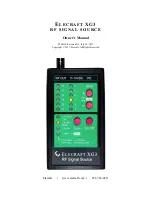
HELPFUL TIPS WHEN SLICING AND GRATING
•
Before slicing round fruits and vegetables in the processor, cut a thin slice from the bot-
tom so food will be more stable. Place food cut side down in feed chute.
•
Always remove hard seeds and pits before processing.
•
Remove the core from hard vegetables, such as cabbage.
•
When slicing thinner vegetables, cut them just short of the length of the feed chute and
stand them vertically in feed chute so they are solidly packed and cannot turn or tilt.
•
Grate hard cheeses at room temperature.
•
Soft and semi-hard cheeses should be well chilled before grating.
GENERAL TIPS FOR USING THE FOOD PROCESSOR
•
Organise processing tasks to avoid multiple cleanups of the bowl; process dry before
wet.
•
The Food Processor will be more efficient if filled no more than 2/3 full.
•
To take advantage of the speed of the processor, drop foods through the food chute with
the processor running.
•
Apply light pressure on the food pusher for soft foods (berries and tomatoes) and slightly
more pressure for hard foods (onions and potatoes).
•
Do not process foods that are so frozen or so hard that the tip of a knife cannot be
inserted into the food.
•
When chopping dried fruits add a little flour to keep the pieces from sticking together.
•
Chill soft cheeses before slicing and grating to prevent the cheese from rolling into a ball
on the disc.
•
When using the slicing / grating disc do not let the food accumulate too high; stop and
empty the processor bowl.
•
Although plastic parts of the processor are dishwasher safe, wash them by hand to
retain their clear appearance.
•
Do not use the processor to:
Grind bones, grains or hard spices
Liquefy fruits and vegetables
Slice warm meat and hard cooked eggs; chill them first.
SPEED SETTING USE
LOW SPEED SETTINGS
•
Reconstituting frozen juices and drink mixes
•
Preparing salad dressings
•
Pureeing soups
•
Blending pancake and waffle batter or mixes
•
Beating eggs for omelettes and custards






































